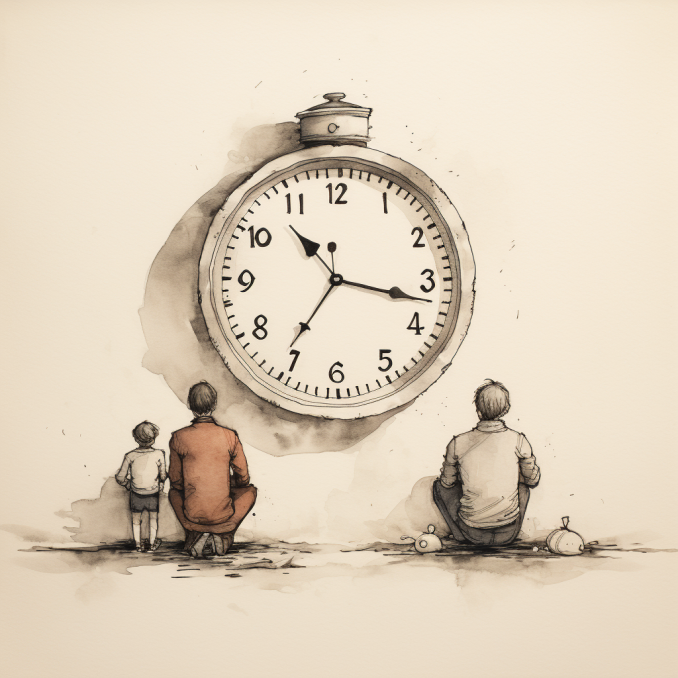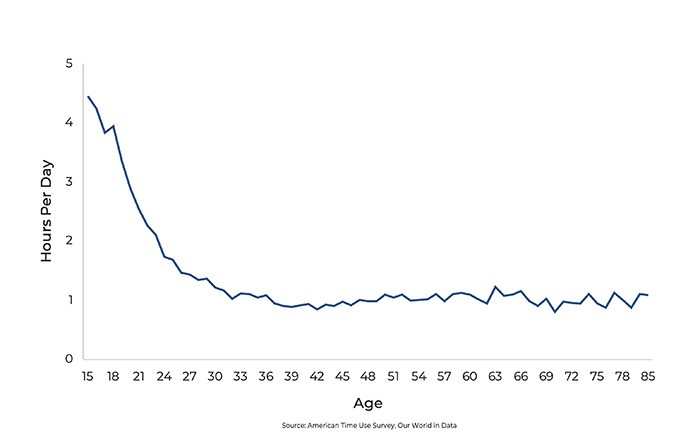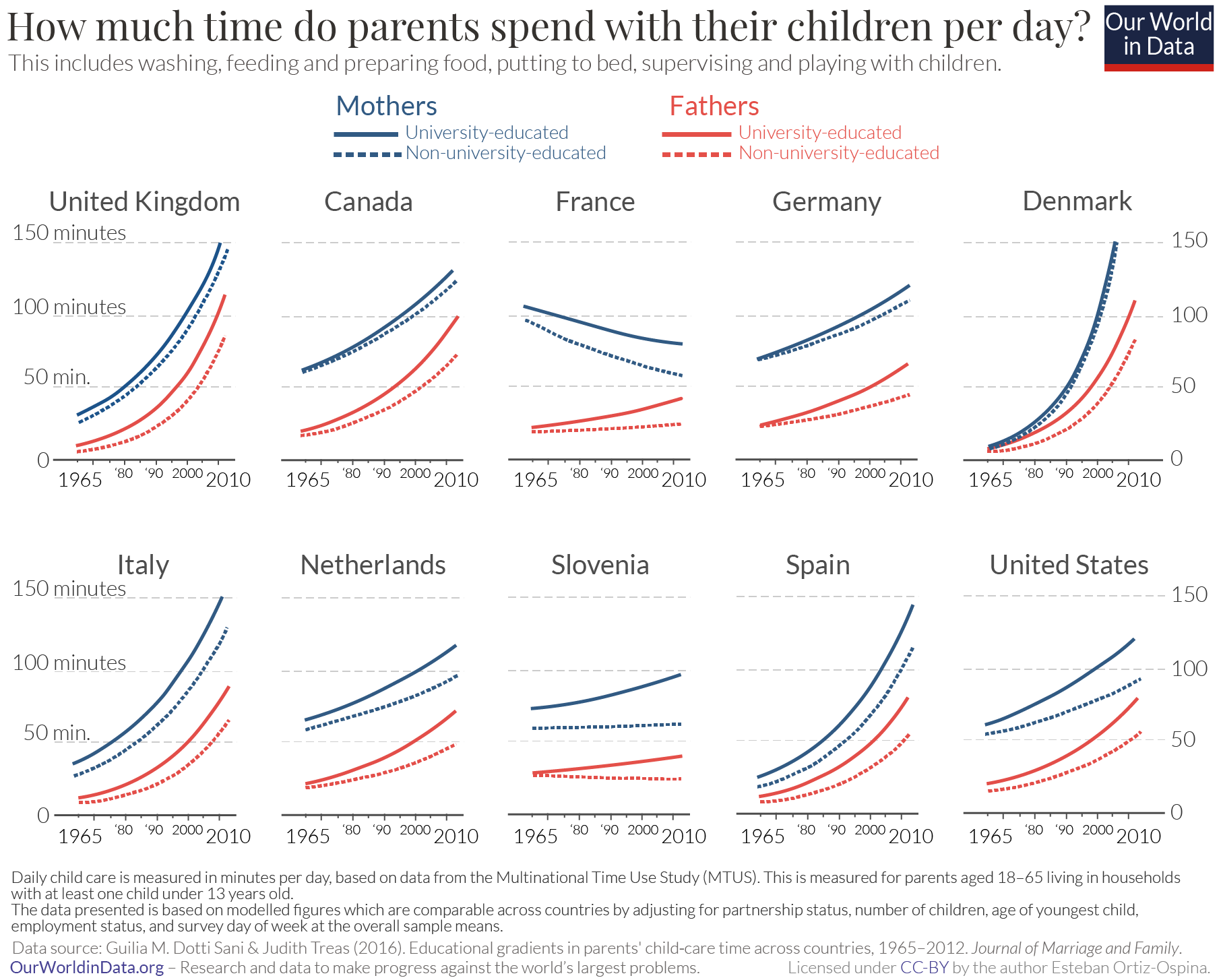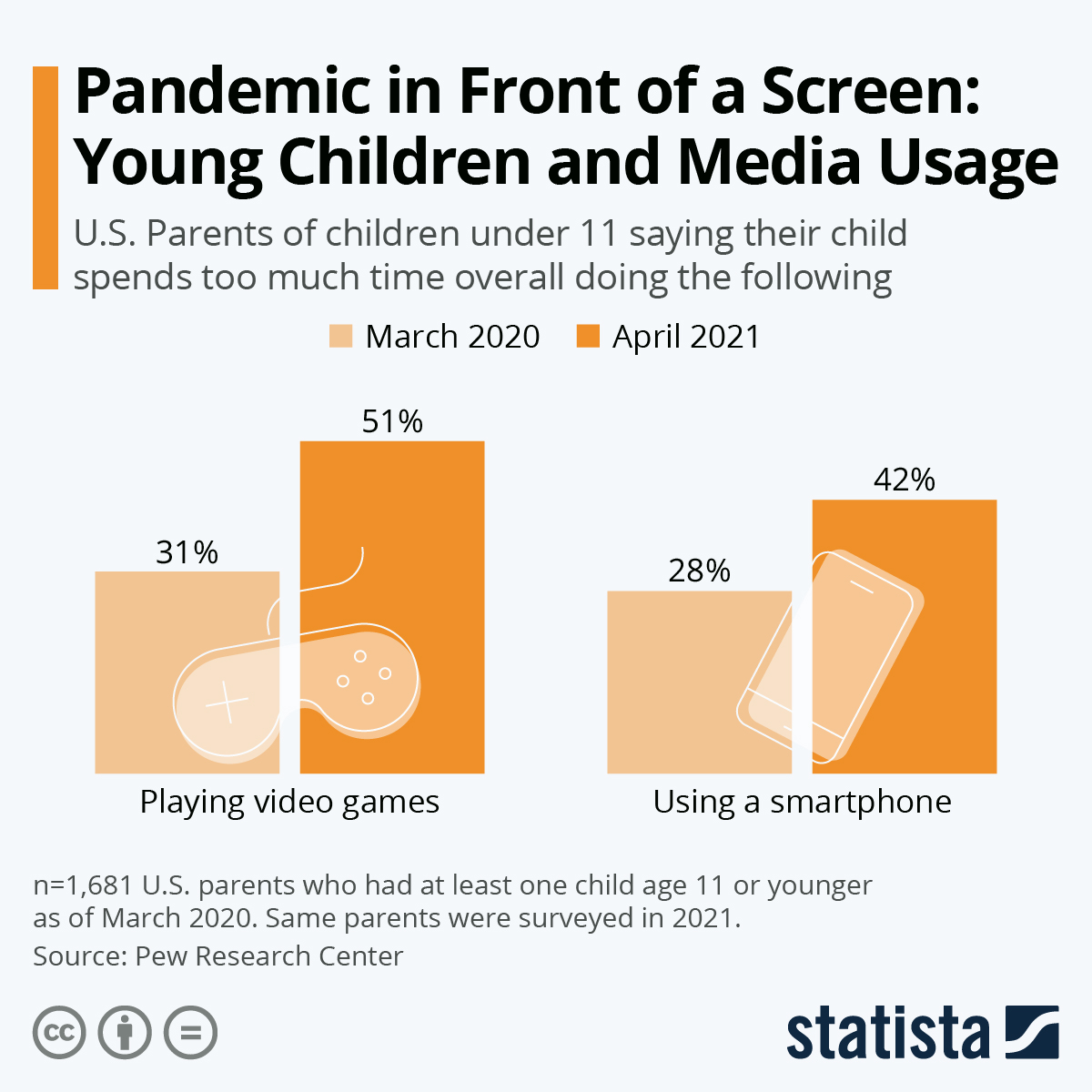
A Few Charts That Capture the Essence of Today’s Life (part 1)
In today’s fast-paced world, how we spend our time says a lot about what’s important to us. Think about it: are we spending more time with family, at work with coworkers, playing games, or hanging out with our kids?
In this article, we’ll use some simple charts to show how these trends have changed over the years. It’s pretty interesting to see how our choices and priorities shift as times change.
After all, time is one thing we can’t get back. As tech has grown and our lives have become busier, it’s no surprise that where we spend our hours has shifted. Whether it’s longer work hours thanks to the digital age or less outdoor play because of new gadgets, the charts we’ll go through will give you a clear picture. So, let’s dive in and see if these trends match up with your own experiences.

| Activity | 1973 (Hours:Minutes) | 2023 (Hours:Minutes) |
|---|---|---|
| Sleep | 7:30 | 7:00 |
| Work (incl. commute) | 8:30 | 8:00 |
| Leisure & Sports | 3:00 | 2:30 |
| Screen time (TV, Computer, Mobile, etc.) | 2:00 | 5:00 |
| Eating & Drinking | 1:30 | 1:30 |
| Chores & Caregiving | 1:30 | 1:15 |
| Personal Care (hygiene, grooming) | 0:45 | 1:00 |
| Physical Exercise | 0:30 | 0:45 |
| Reading | 0:30 | 0:15 |
| Socializing & Communicating (not digital) | 2:00 | 1:00 |
| Travel (non-work) | 0:40 | 0:40 |
- Sleep: Sleep duration has slightly decreased over the years, possibly due to increased screen time, work pressures, or other lifestyle changes.
- Work: Work hours might appear slightly reduced in 2023, but the nature of work has shifted for many. Telecommuting and work-from-home arrangements have blurred the line between personal and work time.
- Screen Time: The rise of the internet, smartphones, and streaming services has led to a significant increase in screen time over the past 50 years.
- Leisure & Sports: Reduction in leisure time may be due to increased screen time and changes in lifestyle.
- Reading: Physical reading (like books and newspapers) has decreased, but this doesn’t account for reading done digitally.
- Socializing & Communicating: Physical socialization seems to have reduced, but digital communication has grown exponentially.
- Exercise: Awareness of health and fitness has increased, leading to slightly more time allocated for physical exercise in 2023.
Time Spent with Family
Back in the day, family time was often a daily staple, with meals, stories, and chores shared together. But with today’s busy schedules and tech distractions, it seems we’re finding less of those quality moments. While many of us are more connected than ever digitally, the traditional face-to-face family gatherings are becoming less frequent in our modern world.
| Activity | 1973 (Hours:Minutes) | 2023 (Hours:Minutes) |
|---|---|---|
| Quality Time (e.g., games, outings) | 1:30 | 1:00 |
| Meals Together | 1:30 | 0:45 |
| Helping with Homework/Educational Activities | 0:30 | 1:00 |
| Watching TV/Movies Together | 1:00 | 1:30 |
| Physical Activities (e.g., walks, sports) | 0:45 | 1:15 |
| Digital Interaction (e.g., video games, online activities) | 0:10 | 1:30 |
- Quality Time: This has perhaps decreased slightly as more parents find themselves balancing work and home life, especially with the blurring lines due to telecommuting.
- Meals Together: With the rise of fast food and individual schedules, some families might have fewer meals together, but this varies widely.
- Helping with Homework: As education has become more competitive, there might be an increase in parents helping or overseeing children’s educational activities.
- Watching TV/Movies Together: The increase here might be attributed to the rise of streaming platforms and home entertainment.
- Physical Activities: Fitness and health awareness have perhaps led to more shared physical activities.
- Digital Interaction: The rise of technology has introduced new ways for families to interact, such as playing video games together or watching digital content.

In traditional settings, families would gather around dinner tables, engage in weekend outings, or simply sit and chat on front porches. It was about bonding, sharing, and creating memories. Fast forward to today, and family dynamics have seen a shift. Modern life, with its endless notifications, work-from-home demands, and online engagements, has redefined ‘family time’. While there’s no denying the convenience of video calls and instant messaging, it’s hard not to miss those uninterrupted moments of laughter, shared stories, and collective experiences. The balance between staying connected in a digital age and cherishing in-person interactions has become a challenge many families grapple with.
In many countries, the amount of time parents spend with their kids has been increasing over the last 50 years.
The chart here shows the time that mothers and fathers spend with their children. This is measured using time-use diaries where parents record the amount of time that they spend on various activities, including child care.
These estimates, which are sourced from a paper published in 2016 by sociologists Giulia Dotti Sani and Judith Treas, are disaggregated by education levels and are adjusted to account for demographic differences between countries.

Pandemic in Front of a Screen: Young Children and Media Usage
During the pandemic, screens became both classroom and playground for countless young children worldwide. With schools transitioning to online formats and outdoor activities becoming limited, many children found solace in digital interactions, be it for learning or leisure. While technology provided a semblance of normalcy and continuity in education, it also raised concerns about the increasing hours children spent in front of screens.
The fusion of education, entertainment, and socialization into one digital platform made it challenging for parents to monitor and limit media consumption. Balancing the undeniable benefits of digital resources with the potential downsides of prolonged screen time became a central concern for caregivers and educators alike. As a result, the pandemic era not only redefined the relationship between young children and technology but also underscored the need for a balanced digital diet.



